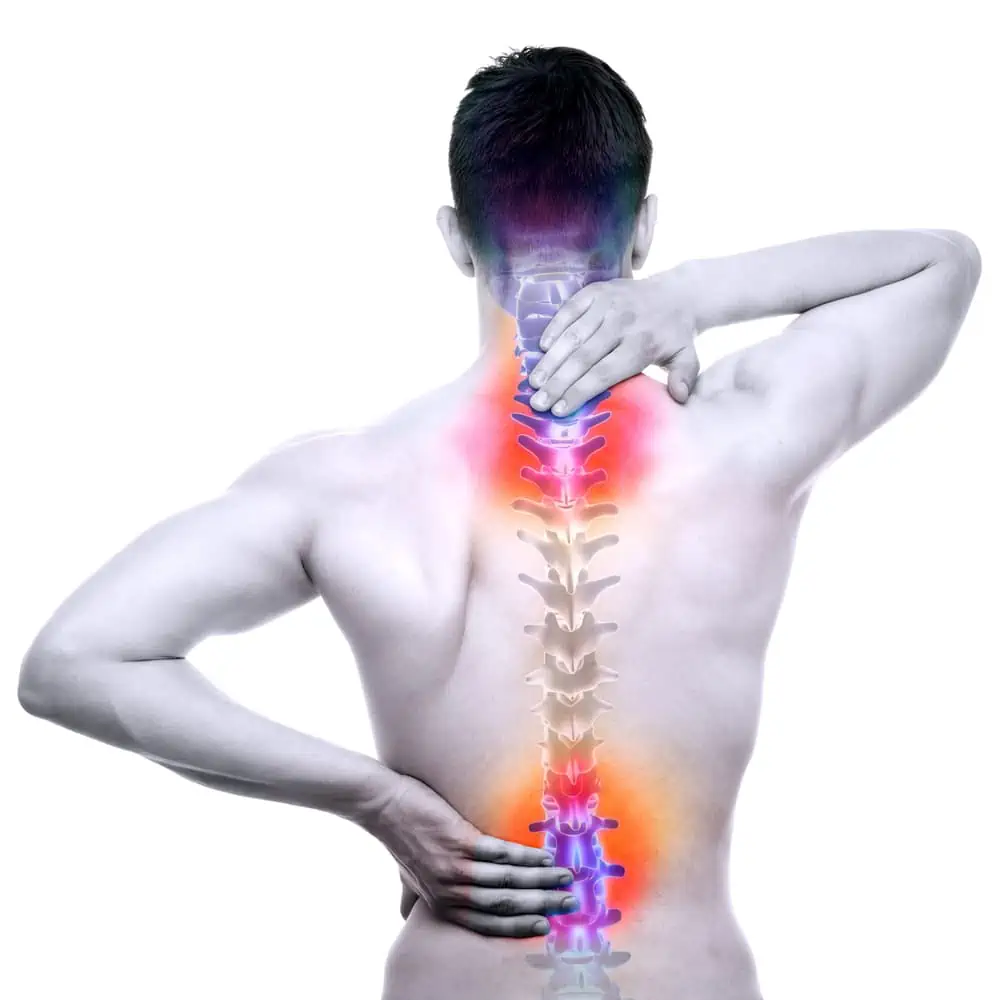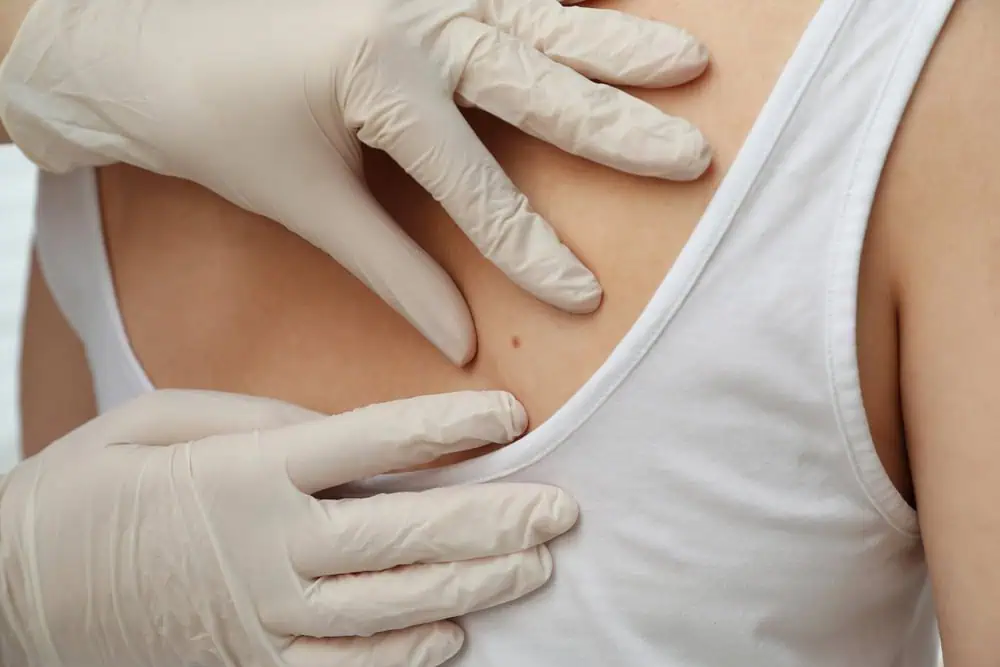Menopause is a natural transition in a woman’s life that can bring about various physical changes, one of which is increased joint pain. This discomfort is often the result of hormonal fluctuations, particularly the decrease in oestrogen levels, which can affect joint health and inflammation. While this is a common symptom, it is not one that women have to endure passively. There are well-researched options available that can help to alleviate this pain. Supplements, in particular, have shown promise in providing relief from menopausal joint pain. Below we will explore different types of supplements for menopause joint pain, and the various side affects menopause can cause.
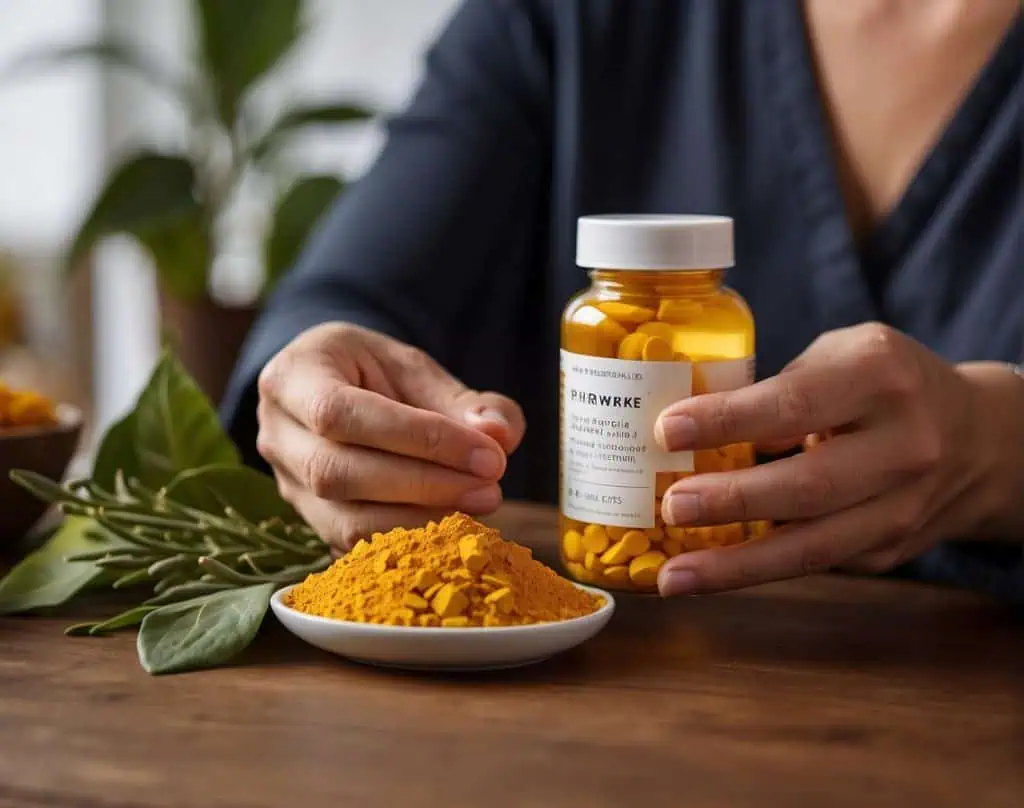
To manage this symptom effectively, it’s important to consider a holistic approach that includes dietary supplements specifically designed to target joint discomfort. Additionally, incorporating nutrition and diet modifications, physical activities, and lifestyle adjustments can further enhance joint health during menopause. Some women may also explore medical management and therapies if lifestyle modifications and over-the-counter options are not enough. Before starting any new supplement or treatment, it is crucial to consult with a healthcare provider to ensure it is appropriate for your individual health needs.
Key Takeaways
- Supplements can alleviate menopause-related joint pain by targeting hormonal balances and inflammation.
- A holistic approach, including diet and lifestyle changes, enhances the effectiveness of supplements for joint pain.
- Consultation with a healthcare provider is key before starting any new supplement or therapy.
Understanding Menopause and Joint Pain
Menopause is a significant phase in a woman’s life, often accompanied by a discomforting symptom: joint pain. Delving into the complexities of this condition, we find that hormonal changes are a pivotal contributor, while factors like diet and lifestyle also play a significant role.
The Menopause Transition
During perimenopause, I observe a gradual decline in estrogen levels, signaling the onset of menopause for many women. This decline is linked to an array of menopause symptoms, including increased discomfort in joints.
Joint Pain During Menopause
Joint pain can manifest as stiffness and swelling in various body parts such as the hands, knees, and shoulders. Many attribute this increase in joint pain during menopause to the fluctuating hormone levels experienced during this time.
Hormonal Factors and Joint Health
One of the critical hormones, estrogen, has a protective effect on joints and inflammation, helping maintain joint fluid and cartilage. As estrogen levels diminish, I witness a rise in joint pain incidence among menopausal women. Hormone replacement therapy is sometimes suggested to combat these effects.
Non-Hormonal Contributors to Joint Pain
I recognize that factors beyond hormones, including stress, poor sleep, and mental health issues, can exacerbate joint discomfort. Mood swings, too, are a result of these fluctuating hormone levels, as well as stressors from various life changes occurring during this period.
Bone Health and Menopause
Estrogen is integral to bone health, influencing bone density and the risk of osteoporosis. Depleted estrogen levels can make bones more fragile and joints less cushioned, which manifests as pain during menopause.
Inflammation and Menopause
As a knowledgeable resource, I share that menopause can lead to an inflammatory state in the body, contributing to joint pain. Adopting an anti-inflammatory diet and monitoring autoimmune disorders such as rheumatoid arthritis are vital for managing inflammation-related joint discomfort in menopause.
Dietary Supplements for Joint Pain Relief
When menopause brings about joint pain due to hormonal shifts and increased inflammation, certain dietary supplements can offer relief and support joint health. I will discuss specific supplements that target inflammation and promote bone health, along with their mechanisms that may benefit menopausal joint pain.
Omega-3 Fatty Acids
Omega-3 fatty acids, particularly eicosapentaenoic acid (EPA) and docosahexaenoic acid (DHA), are known for their anti-inflammatory properties. Supplements like fish oil and those derived from algae can be beneficial. Salmon and other fatty fish are excellent natural sources, but supplementation ensures you get enough omega-3s to have an impact on joint pain.
Vitamin D and Bone Health
Vitamin D is crucial for absorbing calcium and maintaining bone strength. Menopausal women are at a higher risk for osteoporosis and vitamin D can help mitigate that risk. I advocate for sensible sun exposure and supplementation, especially in regions with less sunlight, to ensure adequate levels for preventing vitamin D deficiencies that could exacerbate joint pain.
Herbal Supplements and Extracts
Herbal supplements like turmeric, which contains the active compound curcumin, are widely recognized for their anti-inflammatory effects. Similarly, ginger has compounds that may reduce inflammation. Herbal extracts and supplements can complement a regimen aimed at managing menopause-related joint pain.
Minerals and Joint Health
Minerals such as calcium and magnesium are vital for joint and bone health. Calcium is essential for strong bones, while magnesium supports muscle and nerve function. Supplementation can help maintain proper levels of these minerals, contributing to overall joint well-being during menopause.
Supplemental Compounds
Glucosamine and chondroitin are commonly found in joint health supplements. Methylsulfonylmethane (MSM), collagen, and S-adenosylmethionine (SAMe) are other compounds that may offer joint pain relief by supporting joint cushioning and reducing inflammation. These ingredients are often combined in supplements for a synergistic effect.
Nutrition and Diet Modifications
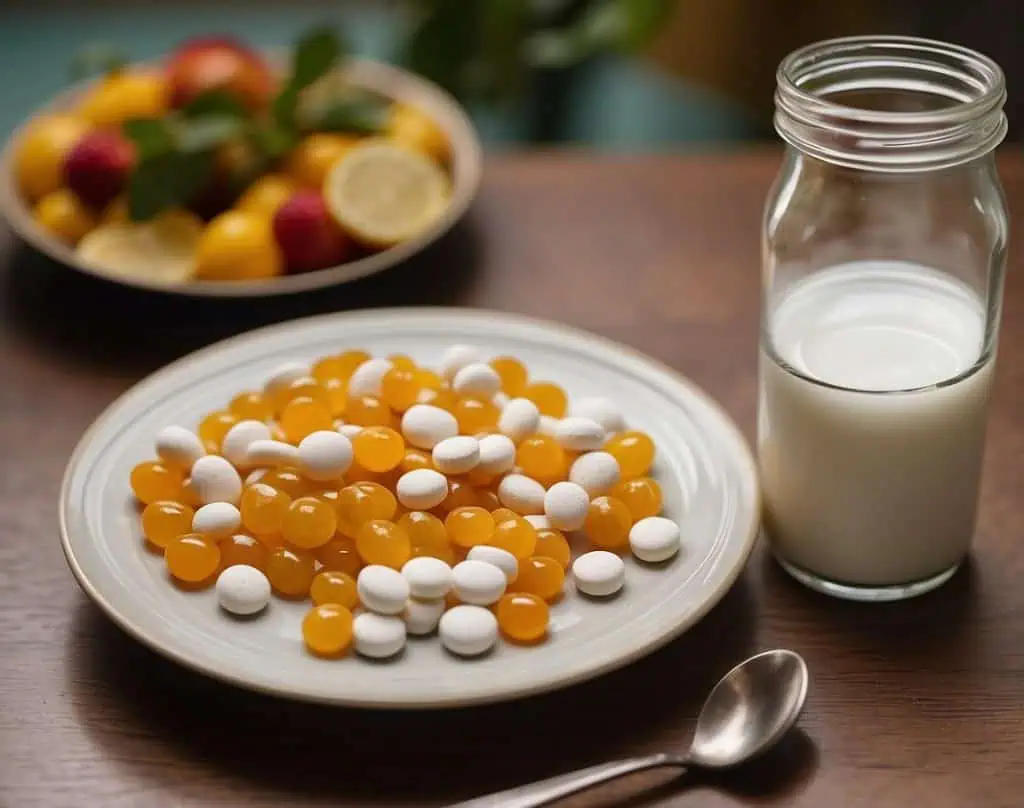
When managing menopause-related joint pain, the focus on nutrition and diet is essential. I’ll guide you through dietary adjustments that can have a positive impact on inflammation and overall joint health.
Anti-Inflammatory Foods
Incorporating anti-inflammatory foods into my diet is one of the key strategies I employ to combat joint pain during menopause. I prioritize a variety of fruits and vegetables, which are rich in antioxidants and can reduce inflammatory markers. Especially effective are turmeric and omega-3 fatty acids, found in fish oil, which I consider essential in reducing inflammation.
Key Anti-Inflammatory Foods:
- Fruits: berries, cherries, oranges
- Vegetables: spinach, kale, broccoli
- Nuts and Seeds: walnuts, chia seeds, flaxseeds
- Healthy Fats: olive oil, avocados
Balancing Macronutrients
Achieving a balance in macronutrients—carbohydrates, protein, and fats—is crucial to support my body’s health during menopause. I ensure that my diet is rich in fiber and quality protein from sources like legumes and lean meats. Adequate protein intake is important for maintaining muscle mass, which in turn supports joint health. I also include healthy fats, like those from avocados and nuts, as they contribute to satiety and are integral to an anti-inflammatory diet.
Macronutrient Balance:
- Carbohydrates: whole grains, legumes
- Protein: lean meats, legumes, eggs
- Fats: nuts, seeds, olive oil
Minimizing Inflammatory Foods
To alleviate joint discomfort, I minimize the intake of foods known to promote inflammation. This means a reduced consumption of sugar, alcohol, and processed foods. I am careful to limit these not just for joint health but for overall well-being. Refined carbohydrates and excessive alcohol, in particular, can contribute to increased inflammation and exacerbate joint pain.
Foods to Minimize:
- Sugar: sweets, sugary drinks
- Alcohol: beer, cocktails, spirits
- Processed Foods: fast food, processed meats, snacks
Exercise and Physical Activity
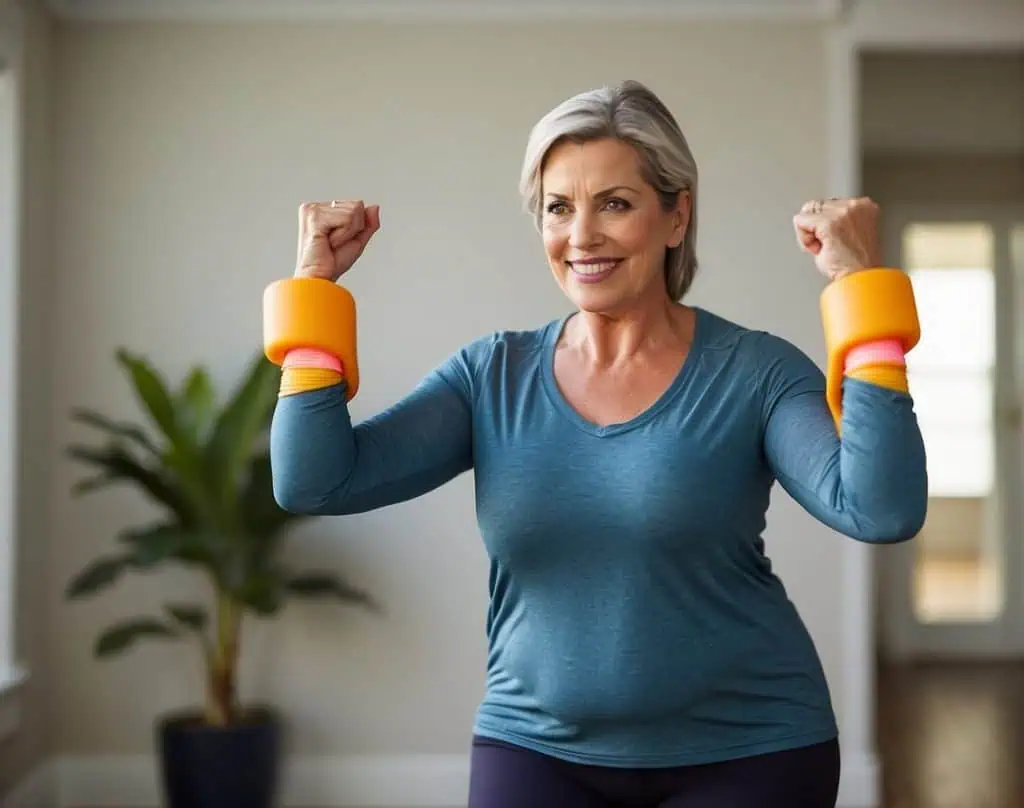
I believe it’s essential to emphasize the role that exercise plays in managing joint pain during menopause. Adequate physical activity can contribute to joint health and overall bone health, potentially alleviating some of the discomforts associated with menopause.
Regular Movement and Joint Health
My experience and findings align with the idea that regular movement is crucial for maintaining joint health. Regular exercises like walking or yoga are beneficial as they promote circulation and help keep the joints flexible. It’s not just about high-impact activities; even low-impact movements can be significant for bone health, as they reduce stiffness and may prevent the loss of bone density often seen in menopause.
- Exercise: Aim for at least 150 minutes of moderate-intensity exercise weekly, including walking or yoga.
- Bone Health: Engaging in weight-bearing exercises helps maintain bone density.
Strength Training and Joints
For me, strength training has been a powerful tool in protecting joints by building muscle mass around them, which supports and stabilizes the fragile areas. Exercises such as pilates or resistance training are particularly effective. These methods not only strengthen the muscles but also help maintain bone density, which can be compromised during menopause.
- Muscle Mass: Focus on exercises like pilates that increase muscle strength to support joint health.
- Weight-Bearing Exercises: Include activities that make the muscles work against gravity to promote joint stability and bone health.
Flexibility and Mobility Exercises
I place a strong emphasis on flexibility and mobility exercises, which are often overlooked by those suffering from joint pain. Stretching and yoga significantly contribute to improving posture and extending the range of motion in the joints. They also help maintain the elasticity of connective tissues, providing relief from stiffness and pain.
- Stretching: Incorporate daily stretching to improve flexibility and reduce joint pain.
- Connective Tissue: Gentle yoga can help maintain the health of connective tissues, enhancing joint mobility.
Lifestyle and Behavioral Adjustments

In managing joint pain during menopause, I understand that a holistic approach is essential. Addressing lifestyle and behavior can significantly alleviate symptoms, alongside any medical treatments or supplements I may be considering.
Stress Reduction and Mental Health
I recognize stress as a catalyst for inflammation, which can worsen joint pain. To counter this, I prioritize mindfulness and relaxation techniques. These practices can include meditation, yoga, or deep-breathing exercises, which not only reduce my stress levels but can also improve my overall mental health.
Maintaining a Healthy Weight
Carrying excess weight puts additional pressure on my joints. I aim for a healthy weight, which may involve a combination of dietary adjustments and regular exercise. I focus on a balanced diet rich in anti-inflammatory foods and low in processed, sugary items. Coupled with moderate physical activity, this approach helps me maintain or reach a weight that’s kind to my joints.
Sleep and Joint Health
Quality sleep is paramount to my joint health. I ensure my bedroom is comfortable and conducive to rest, especially since menopause can bring about night sweats. I have a consistent bedtime routine that may include relaxation techniques to promote uninterrupted sleep, which is critical for joint repair and overall health.
Quit Smoking and Limit Alcohol
I’m aware of the negative impact smoking and excessive alcohol consumption have on my joint health. I aim for smoking cessation and moderate my alcohol intake. By quitting smoking, I reduce inflammation and improve my circulation, and by limiting alcohol, I help keep my joints less irritated and more flexible.
Medical Management and Therapies

When addressing joint pain during menopause, I consider several medical interventions that can be effective. These range from hormonal treatments to physical support strategies.
Hormone Replacement Therapy (HRT)
My approach to Hormone Replacement Therapy is selective and individualized, focusing on alleviating symptoms like hot flashes and vaginal dryness that can indirectly contribute to discomfort. Estrogen and progesterone can play crucial roles in maintaining joint health, and a tailored HRT plan can help restore hormonal balance.
Pharmaceutical Pain Relievers
For immediate relief from joint pain, Nonsteroidal Anti-Inflammatory Drugs (NSAIDs) such as ibuprofen are a common choice. They reduce inflammation and provide pain relief. However, I always advise monitoring for potential side effects and engaging in a conversation about appropriate medication management.
Physical Therapy and Support
Incorporating physical therapy is a proactive way to manage joint pain. Exercises and techniques taught by a physical therapist can strengthen joint-supporting muscles. For additional support, I often discuss the use of assistive devices and recommend consulting with an occupational therapist to address any joint mobility issues effectively.
Conclusion
In my thorough examination of joint pain during menopause, I’ve learned that this is a prevalent issue, impacting many women as they transition through this phase of life. Supplements for menopause joint pain can be instrumental in managing symptoms and improving joint health. Through my research, I’ve identified key supplements that women find helpful, including calcium, vitamin D, and omega-3 fatty acids. These nutrients support bone health and may reduce inflammation.
Key Supplements for Menopause Joint Pain:
- Calcium: Essential for bone strength
- Vitamin D: Aids in calcium absorption and bone health
- Omega-3 Fatty Acids: Anti-inflammatory properties may alleviate joint pain
I am convinced that combining these supplements with lifestyle changes such as a balanced diet and regular exercise can lead to better management of menopause joint pain. Ensuring consistent physical activity is pivotal, as it enhances flexibility and strength in the joints. It’s imperative that those considering supplements consult with a healthcare provider to tailor a plan that addresses their specific needs.
Remember, taking supplements is just one aspect of a holistic approach to maintaining joint health during menopause. It’s about the bigger picture of well-being.
Frequently Asked Questions
In my experience with menopausal symptoms, joint pain can be a significant concern. Here I’ll address some of the most common questions surrounding natural remedies and treatments that specifically cater to menopausal joint pain.
What are the best supplements for menopause joint pain?
For menopausal joint pain, there isn’t a one-size-fits-all “best” supplement, as effectiveness can vary from person to person. However, several supplements have shown potential benefits for reducing joint pain and are often recommended.
What natural remedies can alleviate joint pain associated with menopause?
I’ve found that natural remedies such as maintaining a healthy diet rich in anti-inflammatory foods, engaging in regular gentle exercise, and using supplements like Physio Flex Pro can offer relief from joint pain during menopause. These methods aim to reduce inflammation, which can be heightened during this time.
What treatments are effective for managing joint pain during menopause?
Effective treatments for menopause-related joint pain may include over-the-counter pain relievers, topical creams, and physical therapy. Additionally, lifestyle changes such as weight management and low-impact exercises can lessen the strain on the joints and reduce discomfort.
Which vitamins or supplements are recommended for muscle pain linked to menopause?
To combat muscle pain during menopause, I recommend vitamins such as Vitamin D and supplements like calcium to support bone health. Omega-3 fatty acids are also suggested to help with inflammation that might be causing muscle pain.
Is glucosamine beneficial for women experiencing joint pain in menopause?
Research suggests that glucosamine may be beneficial for women experiencing joint pain as it can help to rebuild cartilage and reduce inflammation, though it’s important to consult with a healthcare provider before starting any new supplement regimen.
How does hormone replacement therapy (HRT) impact joint pain related to menopause?
Hormone replacement therapy can have a potential impact on joint pain by addressing the estrogen deficiency that contributes to inflammation and joint discomfort. HRT might be an option for some women, but it’s crucial to discuss the benefits and risks with a healthcare provider.
Can joint pain that develops in the course of menopause eventually subside on its own?
Joint pain that appears during menopause may improve over time, especially with appropriate lifestyle adjustments and treatments. However, if the pain is associated with osteoarthritis, as is often the case, it may require ongoing management. It’s key to monitor the pain and adapt to treatment as needed.







